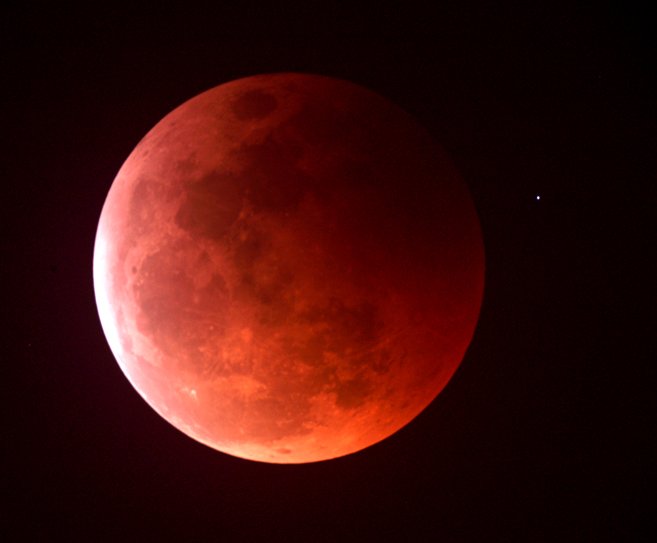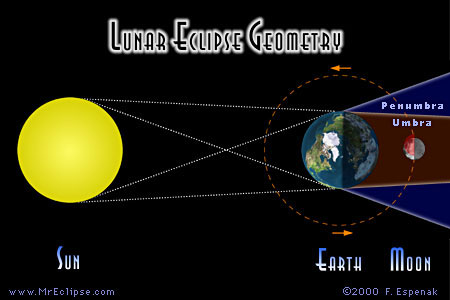What’s Up? Luna Obscura
I have yet to see my first total solar eclipse. My last attempt in August 1999 included rain and umbrellas at an old Abby just north of Paris, France. But, I'm making my plans for the next total solar eclipse across America on August 21, 2017! The problem with solar eclipses is that the path of totality is so narrow, less than 200 miles wide, so one frequently has to travel great distances to view totality (partial solar eclipses, just don't cut it). Plus, totality only lasts for a few minutes
Lunar eclipses on the other hand are much more people friendly and are seen over very large areas on the Earth. Though the spectacle is not as dazzling as a total solar eclipse, it is much more accessible and still an amazing and inspiring sight. I remember standing in my front yard, holding my oldest daughter, then only 5 years old, in one arm while pointing out the curve of the Earth's shadow on the moon, during the total lunar eclipse of April, 1996. At that precise moment, she "got it" that the Earth is round! (note: This was also the conclusion reached by ancient Greek astronomers when viewing lunar eclipses).
Lunar eclipses happen when the Earth passes directly between the sun and the moon, which is at the time of full moon. Though the moon makes one orbit around the Earth every 27.3 days (sidereal month) and is back in the same geometry with the Earth and sun every 29.5 days (synodic month), we do not see a lunar eclipse every month. This is because the moon's orbit is tilted with respect to the Earth's orbital plane by about five degrees. However, this geometry still allows for either a partial or total lunar eclipse about 2-4 times each year.
Lunar eclipses occur about as frequently as solar eclipses. But they are far more accessible. This is because the Earth casts a much larger shadow at the distance of the moon during a lunar eclipse than the moon's shadow does on the Earth during a solar eclipse. Because sunlight passing through the Earth's atmosphere scatters blue light more efficiently than red light (well, the sky is blue isn't it?), red light passes more easily through our atmosphere and so lunar eclipses often appear orange or reddish in color as this light reflects off the moon and back to Earth. The depth and hue of the coloring depends on how much dust and other particulates as well as clouds are in our atmosphere at time of eclipse. Astronauts, standing on the moon during a lunar eclipse would see the Earth eclipse the sun (a solar eclipse from the moon's perspective!) and during totality, would see a bright red ring around the Earth as well as a portion of the sun's corona.
stretching out millions of miles into space. It is divided into two components, a light outer shadow called the penumbra and a dark inner shadow called the umbra which results from a more complete blocking of the sun's light by the Earth. For this reason, lunar eclipses come in three flavors depending on how the moon passes through these two shadows.
Total lunar eclipses happen when the moon passes completely inside the Earth’s umbral shadow. Partial lunar eclipses happen when the moon passes through only a part of the umbra. Penumbral lunar eclipses happen when the Earth passes only through the penumbra. Penumbral eclipses are almost impossible to discern. The penumbral shadow is just too light. Only when the moon passes into the Earth’s umbral shadow, can we see the moon in eclipse.
Lunar eclipses do not require a telescope or special filters to be enjoyed, just a clear sky, lawn furniture, and popcorn (popcorn, optional). Want to have more fun? Hold a lunar eclipse party at your house. Bring telescopes or binoculars for when you get bored since the eclipse (umbral phase) is almost four hours long.
ECLIPSE MATH
Calculate the orbital speed of the moon during the eclipse. Express your answer in km/s.
Lunar Distance on April 14th = 391,078km
Moon’s Orbital Period: 27.3 days








